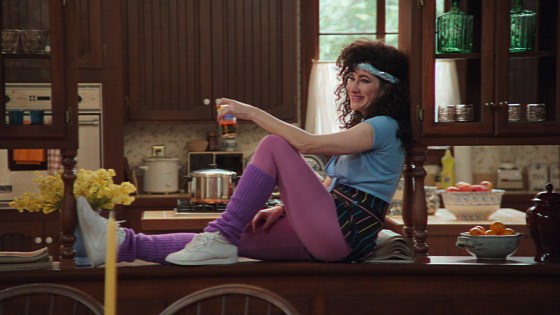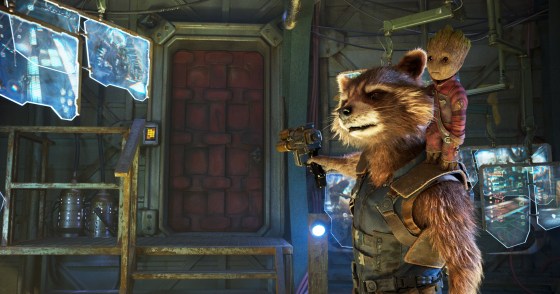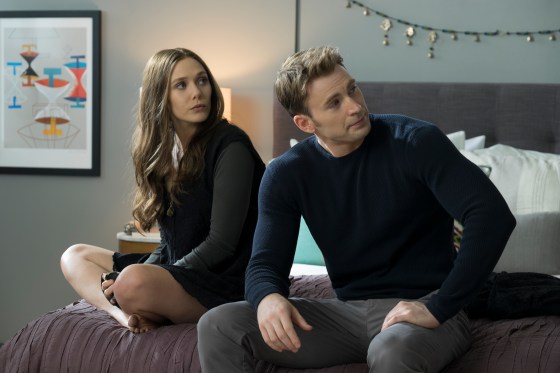Just a year ago, it was difficult to imagine franchises eating up an even larger chunk of pop culture than they already had. Avengers: Endgame, the final chapter in a decade-long superhero saga, had claimed the title of highest-grossing movie ever made. All 10 of the top movies at the box office in 2019 were franchise films. Franchise fare was even invading the awards race: Joker scored 11 Oscar nominations, the most ever for a superhero movie, and nabbed a win for Joaquin Phoenix.
In the past year, for all its wretchedness, the pandemic’s closure of movie theaters and postponement of blockbusters has offered an unexpected reprieve to anxious cinephiles who fear that superhero franchises are smothering the last vestiges of originality.
But that reprieve won’t last long. Already, the franchise machines are ramping back up. Disney recently announced more than 50 new movies and shows based on existing intellectual property, the bulk of them falling under the Marvel and Star Wars umbrellas. Warner Bros. is expanding its DC superhero content to include not one, but two different superhero universes. (That means two or more Batmen, played by different actors, will be running around parallel-universe Gothams at the same time.) Amazon’s long-anticipated Lord of the Rings show is supposed to debut this year. Heck, even Sex and the City is building a cinematic universe. If you believe that franchise fatigue is destroying capital-C Cinema, the movies and TV due out this year would seem to bear out that theory.
But perhaps not all hope is lost. WandaVision, the Marvel Cinematic Universe’s first project in a year and a half, debuted on Disney+ today. And though it is the lynchpin for the future of the MCU, it is unlike anything Marvel has done before. The show is unexpectedly, wonderfully weird and seemingly designed to appeal to the very people who have written off superhero antics as low-brow entertainment. Of course, as TIME’s TV critic laments in her review, the show demands that to fully understand what’s going on, the audience really ought to check out the 23 movies that came before. That is the cunning genius of Marvel Studios: its very design is meant to convert superhero agnostics into full-blown MCU fans. But if we’re all doomed to board this train for the long haul—and I admittedly hopped aboard long ago—it’s about time that Marvel shook things up, broke away from the typical hero’s journey and explored some truly bizarre stories.
Here’s how WandaVision fits into the MCU’s history of experimentation with style and form, why it’s unique, and why Marvel devotees and agnostics alike should hope it’s a sign of what’s to come.
And if you need a primer on the Wanda and Vision of it all—and how the superhero couple fits into the MCU—you can find that here before reading on.
WandaVision is both a sitcom satire and a Marvel mystery

The first episode of WandaVision is a 30-minute comedy in black and white that sends up ’50s-era shows like I Love Lucy. If you come to the show expecting superhero business and immediately feel confused, well, that’s the point. Trailers for the show suggested that Wanda, in her deep depression following Vision’s death, has created some kind of parallel dimension where she can delude herself into thinking that he is still alive, and where they get to live not as an android and a witch but a “normal” couple with all the trappings of normalcy, down to the white picket fence.
Each episode tackles a new decade of family sitcom, from I Love Lucy in the 1950s to Modern Family in the 2010s. At its core, WandaVision is a send-up of these comedies, and a good one at that. Vision phases through a chair in a nod to Rob Petrie tripping over an ottoman in the opening credits to the Dick Van Dyke show. By the 1970s, Wanda and Vision’s house looks eerily similar to the one once occupied by the Brady Bunch. The whole show seems to nod, meta-textually, to the fact that star Elizabeth Olsen grew up on sitcom sets since her sisters Mary-Kate and Ashely Olsen starred in Full House. Kathryn Hahn is an utter delight as the nosy next-door neighbor who seems to be hiding a secret. Each episode has its own theme song, written by Frozen vets Robert Lopez and Kristen Anderson-Lopez in the style of the era.
In this small-screen version of the character, Olsen gets to play emotions other than brave or scared. Her comedic timing is excellent, and she exudes both the determination to build her bubble of happiness as well as the fragility of someone who has experienced trauma, a range that the stuffed Marvel movies rarely have the time to explore.
By the second and third episodes, the show falls into a rhythm, balancing comedic moments with an underlying sense of dread. Wanda’s dream begins to fracture, a la The Truman Show or Pleasantville. Sharp-eyed Marvel fans will spot the allusions to Hydra in the commercial breaks or notice the voice of Randall Park’s character from Ant-Man playing over the radio trying to communicate with Wanda.
Somewhere in Disney’s office probably sits a Venn Diagram that shows how many early family sitcom buffs are also devout Marvel fans. The overlap may be small, but that’s what makes WandaVision Marvel’s most exciting experiment in years. There’s a chance that Marvel agnostics intrigued by the comedic aspects will be turned off by the underlying mystery and Marvel fans will grow impatient with the homages to old Hollywood. The show has to hit just the right balance to pull off both.
Marvel has never actually been all that experimental

The biggest franchise in film history has bizarre origins. The first Iron Man movie is not weird, per se, but it certainly does not have the Disney sheen of the movies that would come after it. Iron Man drinks heavily, beds plenty of women and generally acts fairly unheroic. Aspects of that character remained after Disney acquired Marvel Studios between the first and second Iron Man movies, but his spikiest edges were buffed away until he became a responsible father-like figure in the Avengers and, especially, Spider-Man movies.
What followed was a string of hero origin stories: a hero who is flawed and must be humbled and prove themselves worthy of the cape: Iron Man, Thor and Doctor Strange are hubristic; Ant-Man, Spider-Man, Black Panther and Captain Marvel have their priorities out-of-whack; Captain America isn’t jacked enough. They usually end up fighting someone with their exact same powers. In the sequels, things get personal. The hero must face an AI they themselves created, a rival they ticked off or a sibling/best friend/father who became a villain. Team-up movies would pop up in between.
As time wore on, the heroes got more fantastical—not humans with scientifically-enhanced powers but talking trees and wizards and aliens. The backdrops got cooler—Doctor Strange’s universe beautifully bent in on itself, and a gorgeously-rendered Wakanda inspired millions of moviegoers. But for all the fanfare around Guardians of the Galaxy’s daring decision to feature a talking tree, the stories themselves remained relatively formulaic. (Plus, Lord of the Rings already introduced the world to Ents, so Groot wasn’t a huge stretch.)
To Marvel’s credit, the studio seems to offer its directors more creative bandwidth than, say, LucasFilm, which has earned a reputation for ensuring directors will align with the Star Wars vision (and even firing directors who don’t). The team at Marvel does an excellent job of identifying directors with a unique voice—particularly Ryan Coogler, who built an entirely new and utterly compelling country and culture for Black Panther, and Taika Waititi, who resurrected the deadly boring Thor franchise with the super-fun, psychedelic Thor: Ragnarok.
And the final two Avengers movies certainly surprised fans. Avengers: Infinity War ended with the villain winning, an unprecedented state of affairs in modern superhero films. Not only that, but he snapped his fingers and made half the living creatures on earth—including half of the superheroes we’d come to know and love in the MCU—disappear. Now, nobody over the age of 10 actually thought this was a permanent state of affairs. You don’t reboot the Spider-Man movies with Tom Holland to only make one Tom Holland Spider-Man movie. (And anyone with access to Google could discover that Holland was under contract to film several more movies as Spidey.) Still, few were expecting when they entered the Infinity War sequel, Endgame, for the film franchise to jump five years into the future and spend a good deal of movie time exploring the consequences of a Leftovers-esque tragedy.
But surprise is not quite the same as oddness or experimentation. In the end of the Avengers saga, the good guys won. And they did it using the same tools that they always had: teamwork, sacrifice and inventing a completely new scientific tool (in this case, time travel suits) to save the day. The MCU filmmakers have taken small detours, but never radical departures, from the road laid out by their corporate overlords. Whatever their cosmetic differences, the movies inevitably ended the same way: with one big old CGI fight scene.
The future of the MCU should innovate on the old formula

Perhaps WandaVision is headed toward that inevitable CGI battle too. The trailer certainly seems to suggest as much. But fans are going to be forced to sit patiently through a sitcom satire first. And, boy, is this show a slow burn. It’s only in the third episode that fans will begin to get a sense of what the heck is going on. Before then, the show doles out only sporadic clues and easter eggs, like a bright red helicopter with a symbol that will be familiar to those who have read the Marvel comics. It’s the mystery of how on earth this quiet, comedic series is possibly connected to the loud and operatic Marvel universe that drives the show forward. Between jokes, the audience is left wondering: is Wanda an unwitting participant in her delusion, or its creator? Is someone doing this to her or is she doing it to others?
Still, in the three episodes sent to journalists, Wanda never uses her magic for more than cleaning dishes or rectifying a social faux pas. This show could have easily had Scarlet Witch battling baddies with powers like telekinesis in every episode, flying around the picket-fence fantasy hurling energy balls at some mystical villain.
In fact, many of Marvel’s other Disney+ shows seem to be taking that route. Falcon and the Winter Soldier appears to be an action-packed continuation of the Captain America movies. And there’s precedent for simply mimicking big screen blockbusters on streaming services: The Mandalorian, the first live-action Star Wars TV show that just wrapped its second season on Disney+, is a hit exactly because it’s basically indistinguishable from its film counterparts. It commands nearly as big a budget, produces similarly expensive CGI effects and even hits on the same tropes of orphans and fathers as the films. But with WandaVision, Marvel has managed to show restraint. Audiences will just have to wait. And that is great.
In theory, Marvel fans could simply skip WandaVision and wait for one of Marvel’s 10 other shows headed to streaming services in the coming years or movies like Black Widow and Spider-Man: Homecoming 3 when movie theaters open again. But Marvel Studios head Kevin Feige has hinted that Wanda is actually central to the next phase (4, in case you’ve lost track) of the Marvel Cinematic Universe.
The events of WandaVision will have an impact of both Spider-Man: Homecoming 3 and Doctor Strange: Multiverse of Madness. The latter’s title, and Elizabeth Olsen’s inclusion in that cast, suggests that WandaVision could introduce the concept of a multiverse to the MCU. Some fans have even speculated that Wanda’s immense grief will drive her to become a villain and the main antagonist in the Doctor Strange movie.
Which is to say that MarvelVision isn’t just some one-off experiment. It’s the future of the MCU. At least, fans can hope.

No comments:
Post a Comment